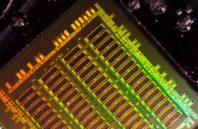Moving from electrical communication to optical communication is attractive to chip manufacturers because it could significantly increase chips’ speed and reduce power consumption, an advantage that will grow in importance as chips’ transistor count continues to rise: The Semiconductor Industry Association has estimated that at current rates of increase, computers’ energy requirements will exceed the world’s total power output by 2040.
The integration of optical — or “photonic” — and electronic components on the same chip reduces power consumption still further. Optical communications devices are on the market today, but they consume too much power and generate too much heat to be integrated into an electronic chip such as a microprocessor. A commercial modulator — the device that encodes digital information onto a light signal — consumes between 10 and 100 times as much power as the modulators built into the researchers’ new chip.

 (585) 768-2513
(585) 768-2513

